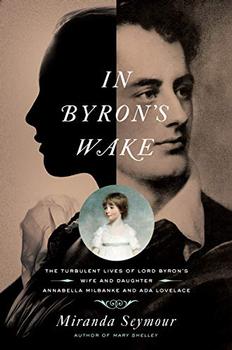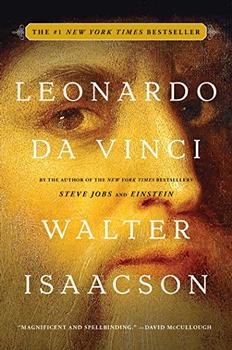Summary | Excerpt | Reviews | Beyond the book | Read-Alikes | Genres & Themes | Author Bio

The Van Gogh Brothers
by Deborah HeiligmanThis is Deborah Heiligman's second biography for young adults, after 2009's Charles and Emma (about Charles Darwin and his wife), a National Book Award finalist. Once again she filters the life story of a famous 19th-century figure through the relationship that meant the most to him. For Darwin that was his marriage; for Vincent van Gogh it was his turbulent but ultimately steadfast friendship with his younger brother, Theo.
The book is marketed to 14-18-year-olds, but I noticed no simplification or deliberate toning down of the content; for instance, it's mentioned that at different points both brothers disgraced themselves by being found with prostitutes. In both style and structure, this is a highly original biography. It opens in the present tense, which recurs in much of the book, and Heiligman intersperses more standard narrative chapters with short scenes almost like sketches. She calls some of these word portraits "croquis," which are quick drawings that concentrate on different parts of a human or animal figure and are later put together as a composite portrait.
The language is highly visual throughout, inviting readers to imagine the view for themselves: "Here is Vincent at the table, drawing" or, as Vincent's parents are dropping him off at boarding school, "We watch the yellow carriage getting smaller and smaller, fading away into the distance, the little boy standing on the steps outside the school, watching his parents vanish." It's a remarkably nested perspective—as if peering directly over his shoulder, we're looking at Vincent as he sees the carriage disappear.
The contents are arranged under headings—Threshold, Gallery One, Gallery Two, and so on—so that the book functions like a museum tour. Before proceeding in a chronological fashion, it opens with a brief flash-forward to 1887 when Vincent, then 34 years old, was living with Theo in his Paris apartment and driving him crazy. "Dogged. Contrary. Stubborn. Vincent," is how Heiligman characterizes him. Yet she is careful to point out how mental illness made him changeable: "It's as if there are two Vincents...Sometimes Vincent is ebulliently happy and kind, sometimes furiously angry and difficult." Indeed, in December 1888, Theo would receive news that Vincent had gravely injured himself.
This biography powerfully conveys the way mental illness clusters in families. It's well known that Vincent struggled with paranoid hallucinations and self-harm, but many may be unaware that Theo himself died in a mental asylum less than six months after Vincent shot himself; also, of the four remaining Van Gogh children, one committed suicide and another was institutionalized.
Piety and a love for art also ran in the family. The Van Gogh brothers grew up in the Netherlands with a pastor for a father, and Vincent entered theological school and also trained to become an evangelist in a depressed mining area in Belgium. Although he later abandoned both undertakings, there's no denying that he felt the pull of the religious life. Meanwhile, he and Theo had been schooled in the arts as well as the sciences, and early on they were both apprenticed to art dealers, starting off at Goupil's, their uncle's firm at The Hague. They moved between different European branches, including Brussels and Paris; while Vincent was fired for being an unreliable worker, Theo soon earned a permanent position and a promotion.
In his role as an art dealer, Theo was responsible for garnering Vincent's paintings what little attention they received in his lifetime, and it's thanks to Theo's widow Johanna that the remainder of Vincent's paintings, as well as the many letters that passed between the brothers, have survived (see Beyond the Book). Theo and Jo's son, Vincent, named after his uncle, also helped to found the Van Gogh Museum in Amsterdam in 1973.
There is a fair bit here that will feel familiar to those who have read about Vincent before. A significant swath in the middle gets bogged down in his unrequited love affairs and failed ventures. It's a long book (though one-quarter of the length is the endnotes, bibliography, etc.) that requires patience to get through. What with all the impressionist scenes, I wonder if Heiligman could have skipped around in time to pick out certain moments that reveal a change of mind or a new project, rather than slavishly following the chronology.
That said, Vincent and Theo is beautifully written and succeeds in being much more creative than your average biography. It is likely to foster a deep and abiding appreciation for art, especially in teens.
![]() This review was originally published in The BookBrowse Review in May 2017, and has been updated for the
October 2019 edition.
Click here to go to this issue.
This review was originally published in The BookBrowse Review in May 2017, and has been updated for the
October 2019 edition.
Click here to go to this issue.

If you liked Vincent and Theo, try these:

by Miranda Seymour
Published 2020
A masterful portrait of two remarkable women, revealing how two turbulent lives were always haunted by the dangerously enchanting, quicksilver spirit of that extraordinary father whom Ada never knew: Lord Byron.

by Walter Isaacson
Published 2018
He was history's most creative genius. What secrets can he teach us? The author of the acclaimed bestsellers Steve Jobs, Einstein, and Benjamin Franklin brings Leonardo da Vinci to life in this exciting new biography.
Your guide toexceptional books
BookBrowse seeks out and recommends the best in contemporary fiction and nonfiction—books that not only engage and entertain but also deepen our understanding of ourselves and the world around us.